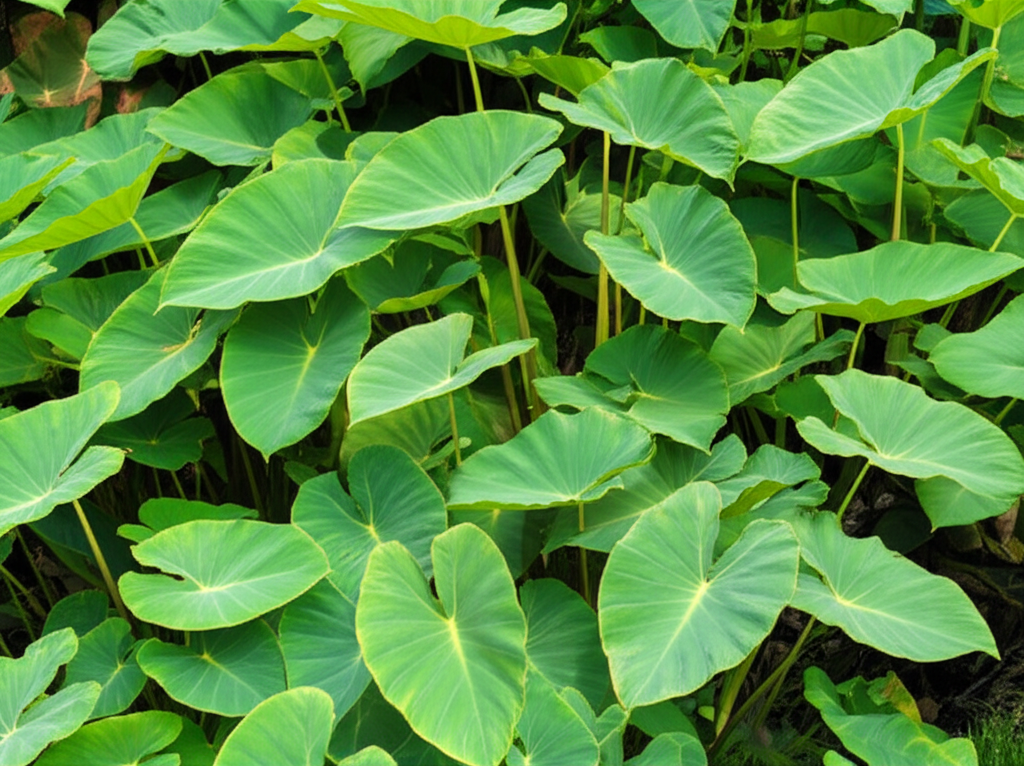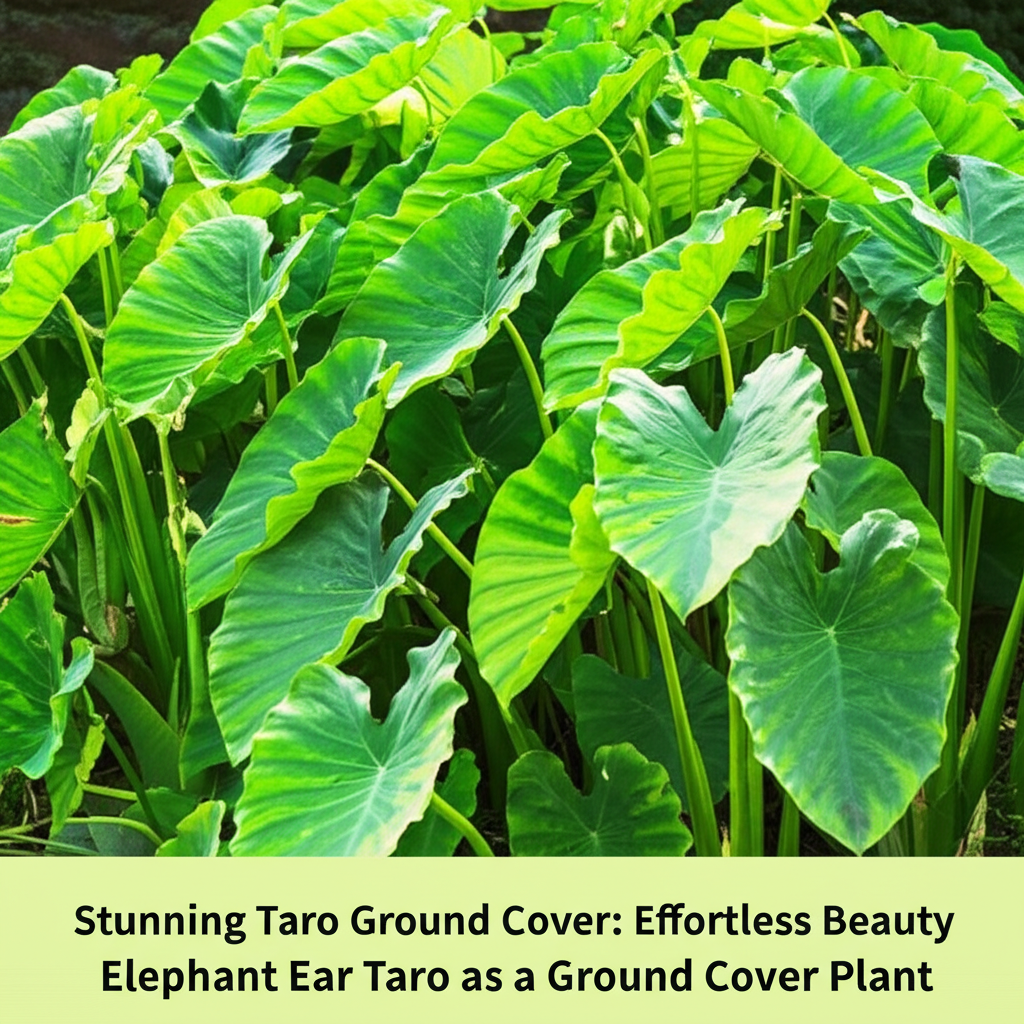Elephant Ear Taro as a Ground Cover Plant: Effortless Beauty for Your Garden

Can you use Elephant Ear Taro as a ground cover plant? The lush, oversized leaves of Elephant Ear (Colocasia esculenta) conjure images of tropical paradises and dramatic landscape statements. But have you ever considered its potential to weave a verdant tapestry across your garden beds, suppressing weeds and providing a stunning visual effect? This article delves into the exciting possibility of using Elephant Ear taro as a ground cover, exploring its unique capabilities, practical applications, and the secrets to achieving effortless beauty with this magnificent plant. Understanding how to effectively deploy Elephant Ear taro can transform your garden into a low-maintenance oasis of tropical allure, boosting its aesthetic appeal while simultaneously improving its ecological health by outcompeting invasive weeds.
Quick Answer Box
Yes, Elephant Ear taro (Colocasia esculenta) can absolutely be used as a ground cover plant, particularly in suitable climates or with a bit of seasonal management. When planted closely together, its large, dramatic leaves create a dense, spreading canopy that effectively suppresses weeds and offers a unique, tropical aesthetic. It thrives in moist, shady to partly sunny conditions, making it an excellent choice for filling in bare patches and adding lushness to your landscape.
What is Elephant Ear Taro as a Ground Cover Plant and Why It’s Important in Gardening
Using Elephant Ear taro as a ground cover plant refers to the practice of cultivating these large-leaved plants in a manner that allows them to spread and form a dense, contiguous planting. Instead of treating them as solitary specimen plants, they are strategically placed at a closer spacing to achieve a mat-like effect. This approach leverages their vigorous growth habit and impressive foliage to create a visually striking and functionally beneficial ground layer in the garden.
The importance of using Elephant Ear taro as a ground cover lies in several key areas:
Weed Suppression: The dense canopy formed by Elephant Ear leaves effectively shades the soil, significantly reducing sunlight penetration. This inhibits the germination and growth of many common weed species, thereby minimizing the need for manual weeding and the use of herbicides.
Erosion Control: The extensive root system of taro, coupled with the dense foliage, helps to bind the soil together. This makes it an effective natural solution for preventing soil erosion, especially on slopes or in areas prone to heavy rainfall.
Moisture Retention: The thick layer of fallen leaves and the dense growth of the plants themselves help to retain soil moisture, reducing the frequency of watering and making the garden more resilient during dry spells.
Aesthetic Appeal: Elephant Ear taro boasts some of the most dramatic foliage in the plant kingdom. As a ground cover, it offers an unparalleled tropical ambiance, transforming ordinary garden spaces into exotic retreats with its large, heart-shaped or arrow-shaped leaves in shades of green, black, or variegated patterns.
Biodiversity: A healthy, well-established ground cover can provide habitat and food sources for beneficial insects and small wildlife, contributing to a more biodiverse garden ecosystem.
Quick Recommendations or Key Insights about Elephant Ear Taro as a Ground Cover Plant
Choose the Right Variety: Not all Colocasia varieties are equally suited for ground cover. Look for those known for a more spreading habit or faster growth.
Moisture is Key: Taro loves water. Ensure consistently moist soil, especially when using it as a ground cover to support its dense growth.
Shade is Your Friend: While some varieties tolerate sun, partial to full shade is often ideal for maintaining lush foliage and preventing scorching.
Spacing is Crucial: For ground cover effect, plant them closer together than you would for specimen plants to encourage them to spread and fill in.
Container or In-Ground: Consider growing them in containers strategically placed in the garden for a controlled tropical effect, or plant directly in well-prepared beds for a more natural spread.
Winter Protection: In colder climates, be prepared to provide winter protection for the corms or treat them as annuals.
Detailed Breakdown of Elephant Ear Taro as a Ground Cover Plant
The Botanical Perspective: Understanding Colocasia esculenta’s Growth Habits
Elephant Ear, scientifically known as Colocasia esculenta, is a perennial herbaceous plant belonging to the Araceae family. It is native to Southeast Asia but has naturalized in many tropical and subtropical regions worldwide. The plant is characterized by its large, succulent stems (corms) that grow underground and produce thick, fleshy rhizomes that spread horizontally. These rhizomes are the primary mechanism by which Colocasia esculenta spreads and colonizes an area, making it inherently suitable for ground cover applications.
From a botanical standpoint, Colocasia esculenta* is an emergent aquatic or semi-aquatic plant that thrives in moist to wet environments. Its large leaves, often exceeding two feet in length, are borne on long, thick petioles (leaf stalks) that emerge directly from the corm. The plant’s rapid growth rate, especially during warm, humid conditions, allows it to quickly form a dense canopy. The rhizomes can extend several feet from the parent plant, producing new corms and shoots, which is the biological basis for its spreading or ground cover potential.
The plant’s life cycle is tied to temperature and moisture. In its native or suitable climates, it can become a perennial, dying back to the ground in cooler periods and resprouting vigorously when temperatures rise and moisture is abundant. The corms are the overwintering structures, storing energy for the next growing season. Their ability to produce new growth from these subterranean structures is key to their persistence and spread.
Practical Applications in the Garden: Creating a Tropical Ground Cover
Transforming your


